#DharmaPath
Explore tagged Tumblr posts
Text
Find Your Soul Purpose with Discover Your Dharma by Sahara Rose
Ready to live a life aligned with your true calling? Discover Your Dharma Sahara Rose is a transformative guide that helps you uncover your soul’s purpose. Rooted in ancient Vedic wisdom and modern self-development, Sahara Rose breaks down the journey to discovering your dharma—your unique reason for being. Through reflection exercises, archetype insights, and practical tools, she empowers readers to embrace their gifts and live with intention. Whether you're seeking clarity or a complete life shift, this book offers the map. Start your path toward fulfillment and authenticity with Sahara Rose’s powerful dharma discovery.
0 notes
Text
🔥 Fire in the Heart: Igniting Purpose with Vedic Wisdom 🔥
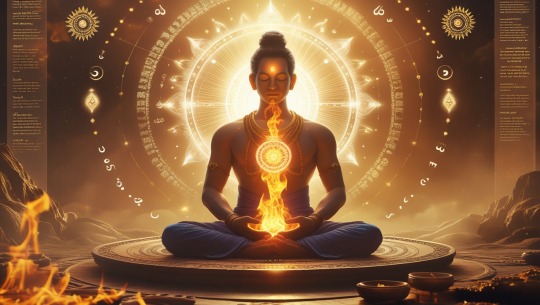
In the deep chants of the Rig Veda, the seer Vasistha didn’t just see fire as an element. He saw Agni — the divine spark — as the very core of awakened purpose. Not the fire that burns forests, but the one that burns illusions. The sacred, disciplined fire that transforms a flicker of awareness into an inferno of truth.
While modern life often confuses “purpose” with “productivity,” Vasistha redirects us inward — to the antar-agni, the fire within. According to him, this inner fire isn't something you find; it's something you remember. The soul already carries the ember. But in a world of distractions, it gets buried under ash.
This inner fire is not ambition. It’s not career. It’s not even goal-setting. It is dharma — your unique frequency that sings in alignment with the cosmos. Vasistha taught that every being has a role, not assigned by society, but by rta, the cosmic order. When the fire of your heart is aligned with that order, your life stops being a chase. It becomes a calling.
Here’s the divergent twist: purpose is not lit by achievement — it's lit by intention. Purpose doesn't demand clarity; it demands courage. According to Vasistha, when your heart’s flame flickers with sincerity, even without direction, the universe bows and lights the way.
🔥 The Fire Ritual Within: A Toolkit to Ignite Purpose Daily 🔥
Daily Inner Homa (Mental Fire Offering) Every morning, before checking your phone, close your eyes. Inhale deeply. Visualize a flame in your heart. Whisper to it: “Burn my fears, burn my false roles, burn what’s not me.” Feed it with love, awareness, and will.
Light Without, Light Within Physically light a small lamp or candle each evening. As you do, say aloud: “As I light this, I remember my own fire.” Make it sacred, not routine.
Silent Vow of Flame Each week, take one simple vow — a karmic fuel to offer your fire. “I will speak with kindness.” “I will not betray my intuition.” These aren’t moral to-dos. They’re sacred logs to keep your flame alive.
Walk with Fire, Not Friction Let go of goals that create internal friction. Vasistha would say: “If your purpose drains you, it is not your fire.” Choose paths that animate, not agitate.
Fire-Centric Journaling (5 minutes/night) Use these prompts:
What stoked my fire today?
Where did I dim it?
What wants to ignite tomorrow?
Through this inner fire, you’re not just finding purpose — you’re forging it, moment by moment.
To Conclude: Vasistha’s wisdom isn’t about climbing spiritual ladders — it’s about becoming your own flame. In a world that asks you to be everything, his voice invites you to just become your fire. For when you burn true, you light the path not just for yourself, but for others wandering in their own darkness.
#VedicWisdom#InnerFire#PurposeDriven#RigVeda#VasisthaSpeaks#SpiritualAwakening#IgniteYourSoul#DharmaPath#AncientWisdomModernLife#SoulAlignment#SacredRituals#SpiritualToolkit#DivineFireWithin#LiveWithPurpose#AwakenTheLight
0 notes
Text
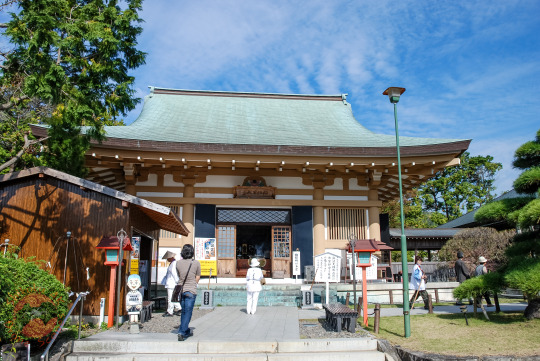


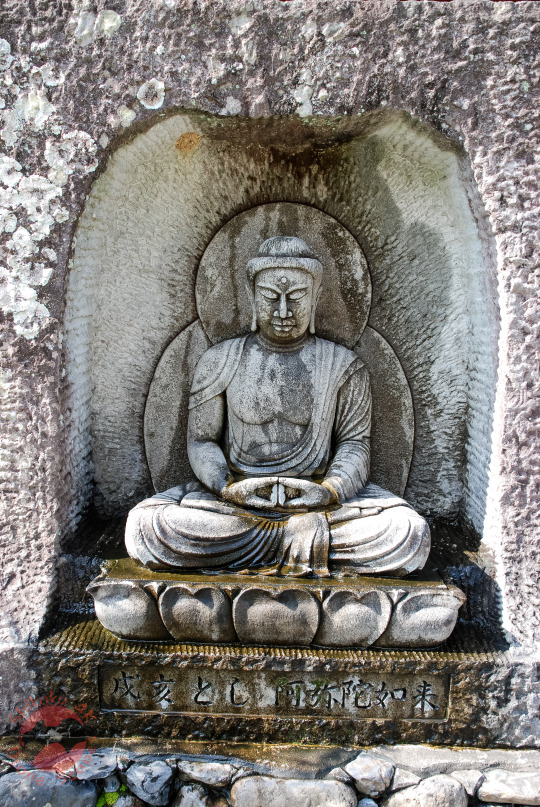
Kanjizaiji (観自在寺) – A Mahayana Buddhist Perspective
📍 Temple 40 of the Shikoku 88-Temple Pilgrimage
Kanjizaiji, located in Ainan, Ehime, Japan, is an important stop on the Shikoku Pilgrimage (四国遍路), a sacred journey undertaken by thousands seeking spiritual purification, wisdom, and merit.
This temple enshrines Yakushi Nyorai (薬師如来), the Buddha of Healing and Medicine, revered in Mahayana Buddhism as a source of both physical and spiritual well-being. Those who pray to Yakushi Nyorai seek protection from illness, guidance through suffering, and a path toward enlightenment.
A Place of Reflection and Practice
🌿 Why visit Kanjizaiji?
Meditate and reflect in a peaceful temple setting, surrounded by nature.
Connect with the compassionate vows of Yakushi Nyorai, who works to alleviate suffering and lead beings to liberation.
Observe intricate stone-carved Buddhas, each representing different aspects of wisdom and protection.
Walk in the footsteps of generations of monks and pilgrims, deepening your Buddhist practice through mindful travel.
Experience the true essence of dana (generosity) and metta (loving-kindness) as you engage with fellow pilgrims on their spiritual path.
The Shikoku Pilgrimage embodies core Mahayana principles—perseverance, devotion, and the bodhisattva ideal. Many undertake this sacred journey not just for personal enlightenment, but for the benefit of others, carrying prayers and blessings with them.
🙏 Interested in exploring more?
🌍 Visit my Linktree for:
Photography and stock media capturing the beauty of Japan’s temples and landscapes.
Private artwork sales, including prints of Buddhist temples, serene nature scenes, and sacred sites.
Social media and personal website, where I share more about the spiritual and cultural essence of Shikoku.
Buy Me a Coffee, if you’d like to support my work and help me continue documenting Japan’s sacred places.
🎥 For video footage of Japan’s temples, visit my Pond5 portfolio—perfect for those looking for professional stock footage of Buddhist sites, traditional landscapes, and cultural heritage.
🔗 Explore here: https://linktr.ee/shikoku4k 🎥 Pond5 Portfolio: https://www.pond5.com/artist/Shikoku4K?ref=Shikoku4K
#ShikokuPilgrimage#YakushiNyorai#MahayanaBuddhism#BuddhistPractice#Healing#DharmaPath#四国遍路#観自在寺#仏教#薬師如来#寺巡り#SpiritualJourney#photography#nature#culture
1 note
·
View note
Text



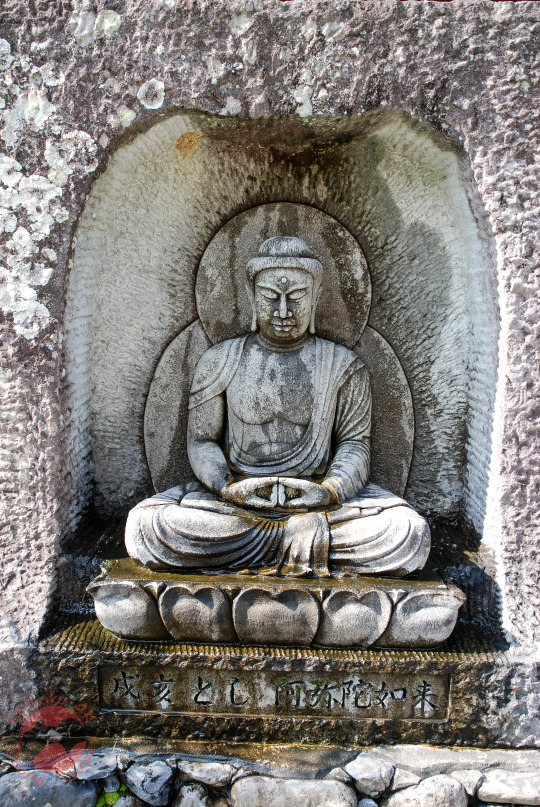
Kanjizaiji (観自在寺) – A Mahayana Buddhist Perspective
📍 Temple 40 of the Shikoku 88-Temple Pilgrimage
Kanjizaiji, located in Ainan, Ehime, Japan, is an important stop on the Shikoku Pilgrimage (四国遍路), a sacred journey undertaken by thousands seeking spiritual purification, wisdom, and merit.
This temple enshrines Yakushi Nyorai (薬師如来), the Buddha of Healing and Medicine, revered in Mahayana Buddhism as a source of both physical and spiritual well-being. Those who pray to Yakushi Nyorai seek protection from illness, guidance through suffering, and a path toward enlightenment.
A Place of Reflection and Practice
🌿 Why visit Kanjizaiji?
Meditate and reflect in a peaceful temple setting, surrounded by nature.
Connect with the compassionate vows of Yakushi Nyorai, who works to alleviate suffering and lead beings to liberation.
Observe intricate stone-carved Buddhas, each representing different aspects of wisdom and protection.
Walk in the footsteps of generations of monks and pilgrims, deepening your Buddhist practice through mindful travel.
Experience the true essence of dana (generosity) and metta (loving-kindness) as you engage with fellow pilgrims on their spiritual path.
The Shikoku Pilgrimage embodies core Mahayana principles—perseverance, devotion, and the bodhisattva ideal. Many undertake this sacred journey not just for personal enlightenment, but for the benefit of others, carrying prayers and blessings with them.
🙏 Interested in exploring more?
🌍 Visit my Linktree for:
Photography and stock media capturing the beauty of Japan’s temples and landscapes.
Private artwork sales, including prints of Buddhist temples, serene nature scenes, and sacred sites.
Social media and personal website, where I share more about the spiritual and cultural essence of Shikoku.
Buy Me a Coffee, if you’d like to support my work and help me continue documenting Japan’s sacred places.
🎥 For video footage of Japan’s temples, visit my Pond5 portfolio—perfect for those looking for professional stock footage of Buddhist sites, traditional landscapes, and cultural heritage.
🔗 Explore here: https://linktr.ee/shikoku4k 🎥 Pond5 Portfolio: https://www.pond5.com/artist/Shikoku4K?ref=Shikoku4K
#ShikokuPilgrimage#YakushiNyorai#MahayanaBuddhism#BuddhistPractice#Healing#DharmaPath#四国遍路#観自在寺#仏教#薬師如来#寺巡り#SpiritualJourney#japan photo now#japan destinations#japan photos#japan#photography#japan vacation#japan of insta
0 notes
Text



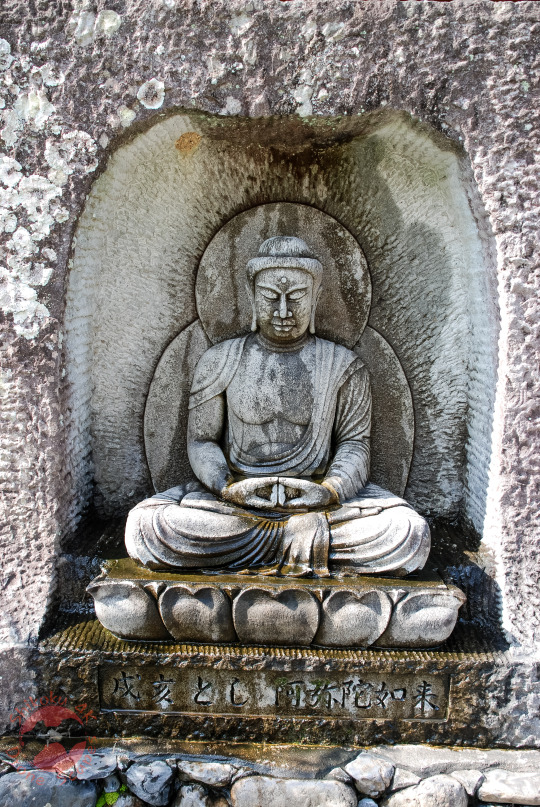
Kanjizaiji (観自在寺) – A Mahayana Buddhist Perspective
📍 Temple 40 of the Shikoku 88-Temple Pilgrimage
Kanjizaiji, located in Ainan, Ehime, Japan, is an important stop on the Shikoku Pilgrimage (四国遍路), a sacred journey undertaken by thousands seeking spiritual purification, wisdom, and merit.
This temple enshrines Yakushi Nyorai (薬師如来), the Buddha of Healing and Medicine, revered in Mahayana Buddhism as a source of both physical and spiritual well-being. Those who pray to Yakushi Nyorai seek protection from illness, guidance through suffering, and a path toward enlightenment.
A Place of Reflection and Practice
🌿 Why visit Kanjizaiji?
Meditate and reflect in a peaceful temple setting, surrounded by nature.
Connect with the compassionate vows of Yakushi Nyorai, who works to alleviate suffering and lead beings to liberation.
Observe intricate stone-carved Buddhas, each representing different aspects of wisdom and protection.
Walk in the footsteps of generations of monks and pilgrims, deepening your Buddhist practice through mindful travel.
Experience the true essence of dana (generosity) and metta (loving-kindness) as you engage with fellow pilgrims on their spiritual path.
The Shikoku Pilgrimage embodies core Mahayana principles—perseverance, devotion, and the bodhisattva ideal. Many undertake this sacred journey not just for personal enlightenment, but for the benefit of others, carrying prayers and blessings with them.
🙏 Interested in exploring more?
🌍 Visit my Linktree for:
Photography and stock media capturing the beauty of Japan’s temples and landscapes.
Private artwork sales, including prints of Buddhist temples, serene nature scenes, and sacred sites.
Social media and personal website, where I share more about the spiritual and cultural essence of Shikoku.
Buy Me a Coffee, if you’d like to support my work and help me continue documenting Japan’s sacred places.
🎥 For video footage of Japan’s temples, visit my Pond5 portfolio—perfect for those looking for professional stock footage of Buddhist sites, traditional landscapes, and cultural heritage.
🔗 Explore here: https://linktr.ee/shikoku4k 🎥 Pond5 Portfolio: https://www.pond5.com/artist/Shikoku4K?ref=Shikoku4K
#ShikokuPilgrimage#YakushiNyorai#MahayanaBuddhism#BuddhistPractice#Healing#DharmaPath#四国遍路#観自在寺#仏教#薬師如来#寺巡り#SpiritualJourney#japan#photography#shikoku
1 note
·
View note
Text
Uttara Phalguni Nakshatra Male and Female Characteristics

The zodiac signs of Leo and Virgo are included in the 12th nakshatra in Vedic astrology, Uttara Phalguni Nakshatra. It is ruled by the Sun and is symbolized by the rear legs of a bed, which stand for relationships, stability, and relaxation. Aryaman, the god of hospitality and contracts who emphasizes loyalty, generosity, and leadership, is the ruling deity. This nakshatra's natives are devoted, accountable, and well-organized; they often succeed in positions requiring leadership, management, and customer service. They appreciate peace, justice, and enduring partnerships but might struggle with rigidity or stubbornness. Uttara Phalguni people flourish in settings that enable them to develop, care for, and assist others.
Read More
#UttaraPhalguni#NakshatraWisdom#VedicAstrology#StarSignificance#AstroInsights#KindnessAndWisdom#LeadershipVibes#GenerousSoul#DeterminedSpirit#IndependentThinker#DivineUnion#SunPower#MarriageStar#DharmaPath#StrengthAndGrace#NakshatraJourney#AstroGuidance#CosmicEnergy#VedicSpirituality#ZodiacVibes#zodiac#horoscope#horoscope2025#astrology2025
0 notes
Text
The Parrot, The Monkey, and the Wisdom of Vedavani Forest
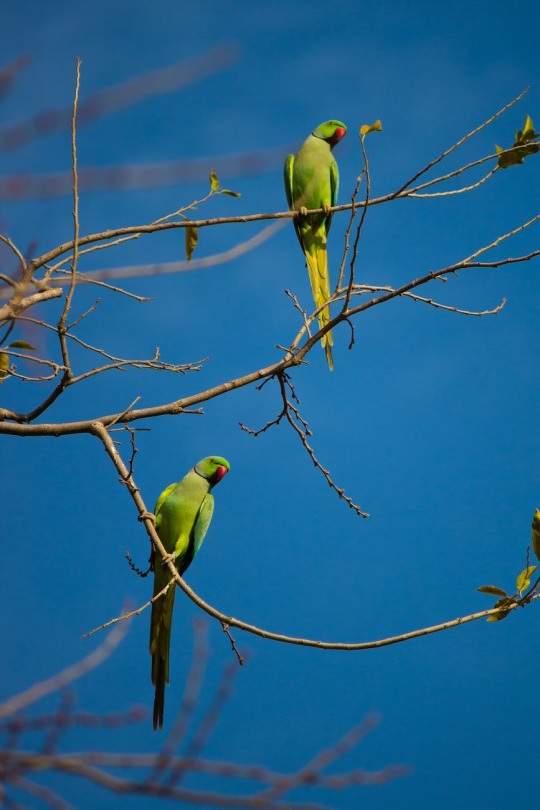
In a mystical land far away, nestled amidst ancient trees, there lay a hidden paradise called Vedavani Forest. This enchanted forest was not like any other; it was a realm of sentient animals, wise trees, and the eternal teachings of Dharma and Karma.
Vedavani - The Forest of Wisdom
Vedavani was a place where the principles of Dharma and Karma were not mere philosophies; they were the very heartbeat of the forest. The inhabitants, led by Dharma, a noble and compassionate parrot, and Karma, the quick-witted and agile monkey, lived in harmony with these timeless teachings. The Vedavani Forest was a masterpiece of serenity and wisdom. It was adorned with ancient trees, their roots embracing the knowledge of centuries, and the songs of the birds and rustling leaves carried the echoes of the cosmos. The Vedas - Mysterious Scrolls of Knowledge One quiet morning, as Dharma and Karma perched on a wise old banyan tree, they heard a soft, melodious humming. The sound seemed to emanate from the very branches they sat on. "Friends," the tree began, "I am Bodhi, the ancient tree of Vedavani. I have stood here for centuries, bearing witness to the cycles of life and death and absorbing the teachings of the Vedas." Intrigued, Dharma and Karma listened with rapt attention as Bodhi continued, "The Vedas hold the secrets of the universe, but they mainly deal with the three modes of material nature - goodness, passion, and ignorance. To unlock their true purpose, one must understand the essence behind them." The Quest for Knowledge These words sparked a flame of curiosity within Dharma and Karma. They decided to embark on a quest to uncover the deeper meaning of the Vedas and to comprehend the purpose that lay beneath their verses. Their journey led them deep into the heart of Vedavani Forest, where they encountered various animals, birds, and trees, each offering invaluable lessons on life's intricate tapestry. The Three Modes of Material Nature As their journey progressed, they came upon the mystical "Triguna Sarovar," a serene pond where the three modes of material nature took on distinct forms. Rajas, a squirrel known for its restlessness, represented the mode of passion. Tamas, the cunning and elusive fox, embodied the mode of ignorance. Sattva, a graceful swan, was the symbol of purity and goodness. Dharma and Karma watched as the three modes interacted, realizing how they influenced the thoughts and actions of all living beings. To understand the Vedas, they needed to transcend the modes and reach a state of balance. The Wisdom of Bodhi Their journey continued, leading them to Bodhi, the wise banyan tree. Bodhi elaborated on the significance of transcending the modes of material nature. "To rise above the influences of passion, ignorance, and restlessness, one must become self-aware, practice mindfulness, and lead a life guided by the principles of Dharma and Karma," Bodhi advised. Dharma asked, "But how can we achieve this transcendence, Bodhi?" Bodhi replied, "Through selflessness, integrity, and by aligning your actions with the harmony of the cosmos, you can rise above the modes of material nature. This is the path to true understanding." The Return to Vedavani Forest Enlightened by Bodhi's wisdom, Dharma and Karma returned to Vedavani, the sanctuary of knowledge. Their journey had transformed them, and they were eager to share the profound teachings of the Vedas with the inhabitants of the forest. The forest came alive with a deeper understanding of the Vedas as Dharma and Karma shared their experiences. The animals, the birds, and even the trees realized that the path to transcendence was open to all, regardless of their form. The Wisdom of Vedavani As the sun dipped below the horizon, the tranquil beauty of Vedavani Forest was a testament to the profound wisdom that had been unearthed. Dharma, Karma, and Bodhi had shown that the Vedas were not enigmatic scriptures; they were the map to understanding life's complexities. The story of Vedavani was not just a tale for children; it was a reminder for all beings, young and old. The Vedas were not just words; they were a way of life, a path to unlocking the purpose behind the modes of material nature. The stars above Vedavani seemed to whisper that the journey to transcendence was open to all, guided by the principles of Dharma and Karma. In this forest of wisdom, the parrot, the monkey, and the ancient tree had unveiled the secrets of the Vedas and illuminated the path to harmony and transcendence.
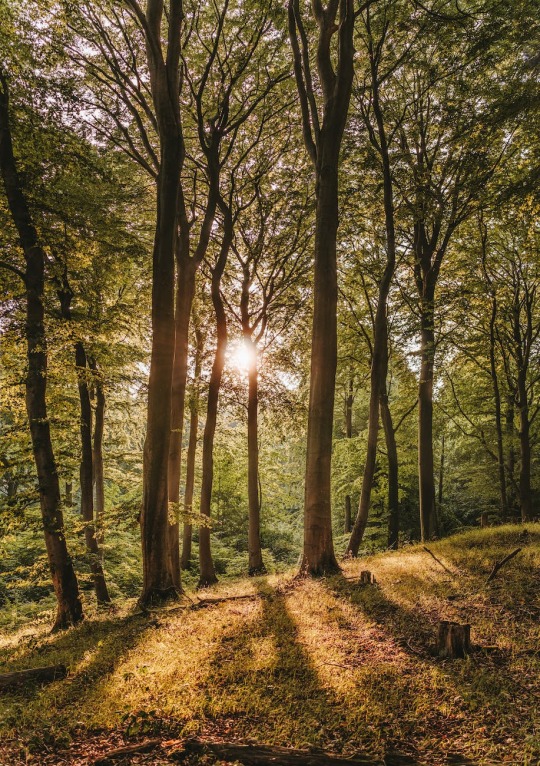
Photo by Felix Mittermeier on Pexels.com Lessons for All In this enchanted forest, the inhabitants learned that the Vedas were not just ancient texts; they were the keys to understanding life's intricate dance. By practicing Dharma, embracing Karma, and transcending the modes of material nature, they could attain a state of balance and inner peace. The story of Vedavani Forest became a beacon of knowledge and enlightenment, a testament to the eternal wisdom that resided in the Vedas. The path to transcendence was open to all, and the balance of Dharma and Karma was the guiding light leading the way. A Timeless Legacy As the moon cast its gentle glow over Vedavani, the inhabitants of the forest absorbed the profound teachings of Dharma and Karma. The legacy of this mystical forest would be passed down through generations, a testament to the power of understanding the Vedas' true purpose. The story of Vedavani, the parrot, the monkey, and the wise tree, was a living testament to the timeless wisdom that resided in the Vedas. The path to transcendence was not a distant dream; it was a journey that could be undertaken by anyone, guided by the principles of Dharma and Karma.
The Echoes of Vedavani
As the story of Vedavani echoed through the ages, it inspired countless souls to embark on their quest for understanding the Vedas' profound teachings. Dharma, Karma, and Bodhi had illuminated the path, showing that the journey to transcendence was open to all, and the purpose behind the Vedas could be uncovered by those who sought it. The Timeless Wisdom The Vedas were no longer mysterious scrolls; they were the keys to unlocking the purpose behind the modes of material nature. Dharma, Karma, and Bodhi's tale reminded the world that the path to transcendence lay within, guided by the principles of Dharma and Karma. The Eternal Journey As the world continued to evolve, the wisdom of Dharma, Karma, and Bodhi remained eternally relevant. The balance between righteousness and action, the understanding of the modes of material nature, and the quest for transcendence were the timeless lessons that guided countless souls on their eternal journey. The story of Vedavani, the parrot, the monkey, and the wise tree, was a testament to the enduring power of the Vedas and the path to transcendence through Dharma and Karma. The forest whispered its eternal message to all who would listen: the purpose behind the Vedas was a journey to understanding, and that journey was open to all who sought it. Bhagavad Gita: 2.46 yāvān artha udapāne sarvataḥ samplutodake tāvān sarveṣu vedeṣu brāhmaṇasya vijānataḥ yāvān—all that; arthaḥ—is meant; udapāne—in a well of water; sarvataḥ—in all respects; sampluta-udake—in a great reservoir of water; tāvān—similarly; sarveṣu—in all; vedeṣu—Vedic literatures; brāhmaṇasya—of the man who knows the Supreme Brahman; vijānataḥ—of one who is in complete knowledge. All purposes that are served by the small pond can at once be served by the great reservoirs of water. Similarly, all the purposes of the Vedas can be served to one who knows the purpose behind them. Read the full article
#ashortstory#Balanceofnature#BedTimeStories#BedTimeStory#Dharmaandkarma#Dharmapath#EternalWisdom#Karmaguidance#Mysticalrealm#Shortstory#Timelessteachings#transcendencejourney#Vedaspurpose#Vedaswisdom#Vedavaniforest
0 notes
Text
Is Krishna's Philosophy Universal?
youtube
Krishna's philosophy, as expounded in the Bhagavad Gita, transcends cultural and temporal boundaries, making it a universal beacon of wisdom. Rooted in the teachings of dharma, selfless action, and the pursuit of spiritual realization, Krishna's philosophy provides profound insights into navigating life's challenges with grace and purpose. Whether in the ancient context of the Mahabharata or the modern complexities of our lives, Krishna's timeless wisdom resonates universally, offering guidance for seekers on the path of self-discovery and fulfillment.
#KrishnaPhilosophy#BhagavadGitaWisdom#UniversalTeachings#DharmaPath#TimelessWisdom#SpiritualRealization#LifeGuidance#PhilosophyBeyondBorders#KrishnaInEveryHeart#WisdomForModernLiving#Youtube
0 notes
Video
youtube
Your Birth Year Isn’t Random – It’s a Message from the Universe 🔮 #BirthYearMessage #NumerologySecrets #SoulCode #SpiritualAwakening #CosmicWisdom #DharmaPath
0 notes
Text
Dharma to Karma
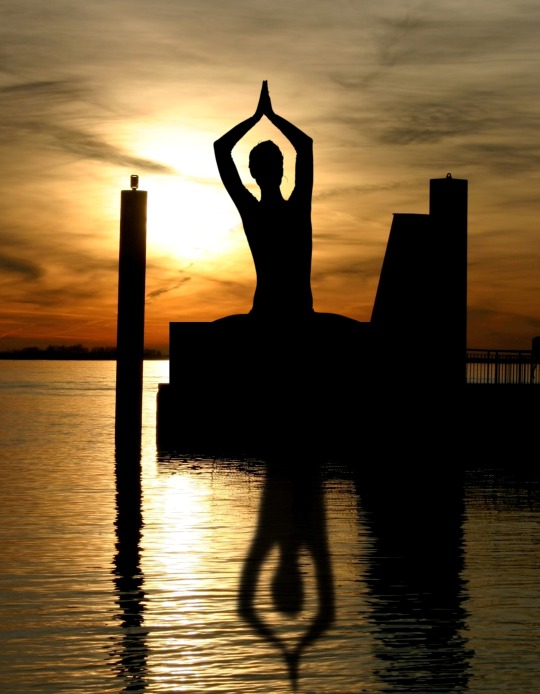
Both 'Karma' and 'Dharma' are Sanskrit terms inherited from Vedic philosophy, India's most incredible wisdom in the field of spiritualism dating back over 5,000 years. According to that concept, 'karma' is a path of activity in thoughts, words,motives and acts, implying that cause equals effect, action equals response, and opposites are equal as one and the same, being two sides of the same coin. 'Dharma' refers to a universal rule of conduct for living in harmony with nature and the universe.
According to the Vedas, there is no need to give up anything in life to progress, transcend, and transform. You don't have to live in a remote location to live a moral life. You can live a righteous life no matter where you are. Our sages established four 'purusharthas' of life - Dharma, Artha, Kama and Moksha, which interprets as the goals of human existence. These are the four human life goals that everyone must strive to thrive.
Artha means economic success, Kama is for sensual pleasures, Dharma relates to morality and righteousness, and finallyMoksha is to liberate your mind after you are content from the previous three goals of the mind. All four are essential for a wholesome life. A person is mentally ready for Moksha only after oneexperience and realizes in contentment, the first three purusharthas. A simple comparison may be used to demonstrate this. If you cut the cloth into four pieces, the fourth is automatically ready after you slit the first, second and the third piece.
According to the Vedas, the creator and creation are the same. The four purusharthas are to awaken that divine residing within the soul, which we are unaware of. There is no such thing as duality from which the limited human mind operates. The substratum of all that exists in the Universe is the absolute, eternal, infinite Brahman/energy on which all subset energies superimpose that are interchangeable as solids, liquids, and gases, or we can say as matter and consciousness.From the universal or spiritual point of view,God is that supreme ability of the absolute energy referred to as Parabrahman, Parmashewar or as Paramatma.It is that formless God, which is the absolute, non-dual, everlasting, unlimited, boundless, and unchanging ability of energy, also present within the soul of every individual self.Therefore, physical, chemical, mental, nuclear, and electrical subset energies all arise and vanish into the absolute nothingness of the cosmos.
When the above-mentioned supreme ability enters the individual mind, it settles in the mind's quiet zone, the unconscious mind, which is the mind's thoughtless zone. Spiritually, we refer to this as the superconscious section or the soul.Practicing- the four purusharthas, the mind transforms into higher consciousness to experience and realize it’s limitless potentiality via the soul.However, in today's environment, no one is concerned with the authentic methods provided by spirituality or leading a soulful life. This is most likely why many individuals suffer from rage, anxiety, despair, and stress.
So, how can we put these four purusharthas into practice?
Being aware of your thoughts, words, motives, and actions is the first step. This is because the mind mechanically operates in a subconscious mode (lower consciousness) 98 per cent of the time. It is mostly unaware of what it is doing and thinking. We require the soul to check and guide the mind. This is made possible only if we are constantly alert, attentive, and aware. Further, we require to watch and witness our mind chattering in its thoughts, feelings, and motives. The moment we watch and witness our mind without it responding, justifying or with any prejudice; the mind becomes conscious of all its acts - positive and negative.Thereafter, we leave the mechanical mind to decide what it wishes to select, one out of the two in dual opposites of good/bad, truth/lie or positive/negative. As a result, the mind becomes aware and sensitive to all that is around. This shall assist in reawakening the soul lying dormant within. Hence, once you become a constant witness-er to your own body and mind, life transforms making you more conscious and stable.It will help you discover‘who you actually are’ outside of your body and thoughts.
The soul will lead your mind to discover that truth within. It is that unique inert individual intelligence, which discovers all that we know from the stars to the subatomic particles, which also distinguishes you from the world's other seven and a half billion individuals. The intellect on other hand is borrowed knowledge obtained via every media from others’ experiences.
Therefore, in a dharmic (righteous) manner, earn money (Artha) to satisfy your sensual needs (kama). Only after being content, the mind begins the journey towards emancipation (Moksha). The mind otherwise becomes self-destructive if you do not carry out your goal/responsibilities properly. It is evident seeing the absence of the mind from being spiritual that we see anger, anxiety, and anguish all around.
Let us now discuss Moksha. There are different ways to realize Moksha. The first is about breaking free from the cycle of birth and death. We are not concerned with that. In the life that we exist, our concern should be more towards breaking free from the mind's never-ending chatter. Instead of using our mind, we are being used by it. Liberate our true self from the clutches of our own mind by being alert, attentive and aware – watching and witnessing without the mind responding in any way all that it does.
Learn from the past, live in the present, and prepare your mind for the future. Please keep in mind that dharma and karma are critical aspects of your existence. They educate you on how to live a moral life and save you from going down the path of self-destruction.
#DharmaToKarma#DharmaAndKarma#ThePathToKarma#KarmicJourney#TheJourneyOfDharma#LivingWithDharma#FollowingDharma#KarmicAwakening#DiscoveringKarma#TheLawOfKarma#KarmicBalance#ElevatingDharma#AwakeningToKarma#DharmaLeadsToKarma#DharmaKarma#KarmicLaw#CosmicJustice#KarmicCycle#DharmaPath#KarmicDestiny#LifeLessons#SoulJourney#CauseAndEffect#SpiritualAwakening
1 note
·
View note
Photo
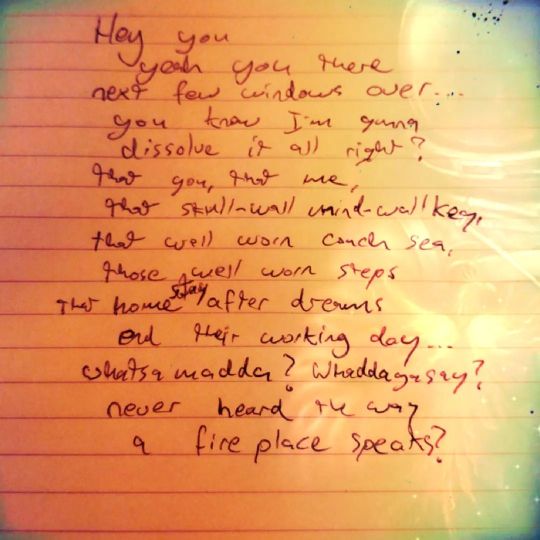
Hey you, Yeah you there Next few windows over... You know I'm Gunna Dissolve it all right? That you, that me, That skull-wall, mind-wall key, That well worn couch sea, Those well worn steps That home stay after dreams End their working day... Whatsamadda? Whadayasay? Never heard the way A fireplace speaks? #samsara #firefamily #oneconsciousness #impermenance #nirvana #tao #dharmapath #heyyou #poetryofig❤ #poetryasmedicine #poemsofinstagram❤️❤️ #poemsporn_ #poetsdaily #poetsofinstagramcommunity #igpoet #igpoems #igpoetry #igpoetrygram #instapoems #instapoets #buddhapoet #poetryislove #poetryofthesoul #poetryfeelings #onelove #melbournepoetry #melbspokenword (at Ferntree Gully, Victoria) https://www.instagram.com/p/CbXU8dPljWm/?utm_medium=tumblr
#samsara#firefamily#oneconsciousness#impermenance#nirvana#tao#dharmapath#heyyou#poetryofig❤#poetryasmedicine#poemsofinstagram❤️❤️#poemsporn_#poetsdaily#poetsofinstagramcommunity#igpoet#igpoems#igpoetry#igpoetrygram#instapoems#instapoets#buddhapoet#poetryislove#poetryofthesoul#poetryfeelings#onelove#melbournepoetry#melbspokenword
0 notes
Photo

You will see, touch, taste, and feel life's magic in a way you never imagined. You will love, and you will be loved. And you will learn that it is all the same. You are open now, more open than you've ever been. Trust the process and trust your heart. The journey is not in vain. #dharmapath #journeytotheheart Thank you @bettycdraper and Dawa. These books were much needed to begin 2017 right. (at Denton, Texas)
0 notes
Text
Stree Dharmapath Pravartika Aahe | स्त्री ‘धर्मपथप्रवर्तिका’ आहे!! (Marathi Edition)
Stree Dharmapath Pravartika Aahe | स्त्री ‘धर्मपथप्रवर्तिका’ आहे!! (Marathi Edition)
Price: (as of – Details)
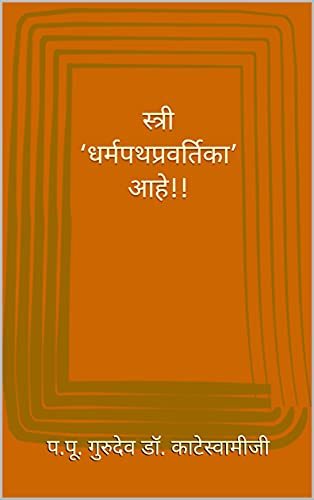
View On WordPress
0 notes
Photo

Dharmapath, 2017 #monochrome #streetphoto_bw #appleseller #streetphoto #streets #dad #iphonography #streetphotography_bw #son #blacknwhite #kathmandu #Nepal #foodtogo
5 notes
·
View notes
Photo

KMC to build automated car parking system Kathmandu, November 10 In a bid to reduce traffic congestion, Kathmandu Metropolitan City is preparing to build a multi-storey automated car parking system in Dharmapath.
0 notes
Photo
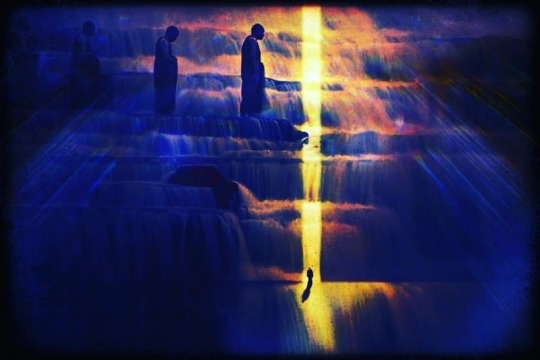
It's not being 'at' the mercy of the divine. That denotes a cruel slip on the cliff edge, a titanium wall, a crack of the desert snaking through your bones... No it's being with the mercy of the divine, The waterfall in your blood, The all meant to be, The infinitely beautiful Design of rain and silence That once was, And still is, your heart beat... #fate #willofeternity #sacredthoughts #compassion #dharmapath #chooselove #becoming #poetryofig❤ #poetryasmedicine #poeteyofthesoul #poemoftheheart #poetryoftheuniverse #mercy #consciousness #beingyourself #poemsofinstagram❤️❤️ #poemsofinsta #poemsdaily #poemsoftheday #melbournepoetry #melbspokenword (at Ferntree Gully, Victoria) https://www.instagram.com/p/CUcl7H3F88V/?utm_medium=tumblr
#fate#willofeternity#sacredthoughts#compassion#dharmapath#chooselove#becoming#poetryofig❤#poetryasmedicine#poeteyofthesoul#poemoftheheart#poetryoftheuniverse#mercy#consciousness#beingyourself#poemsofinstagram❤️❤️#poemsofinsta#poemsdaily#poemsoftheday#melbournepoetry#melbspokenword
0 notes